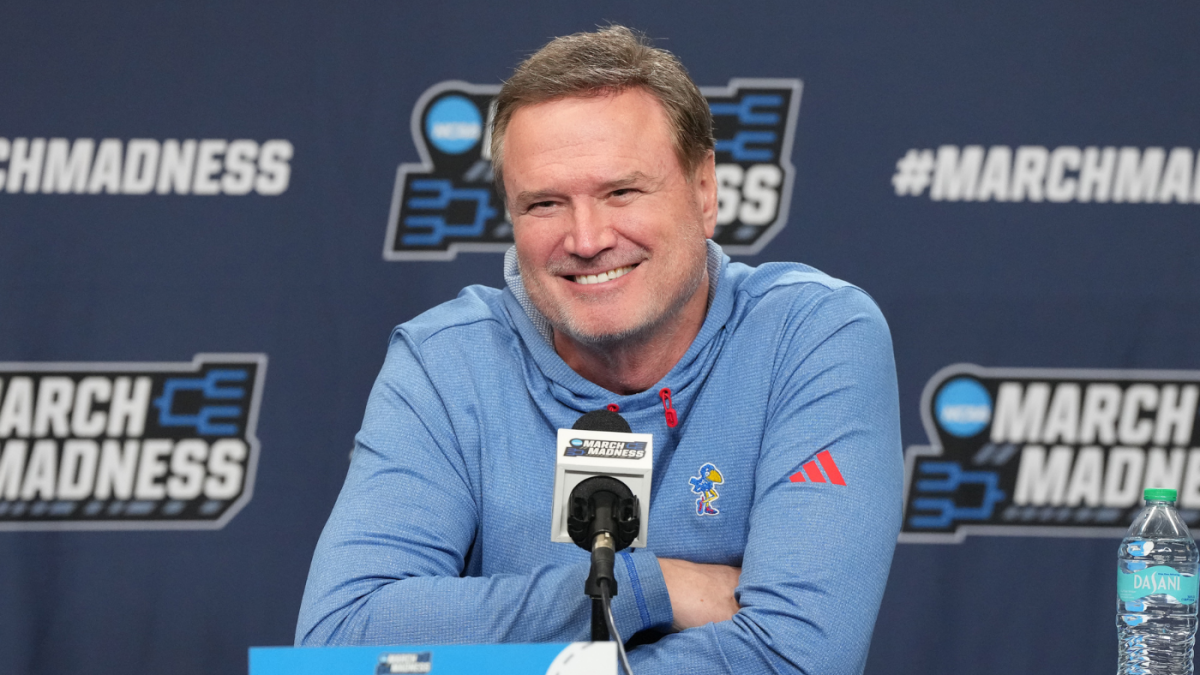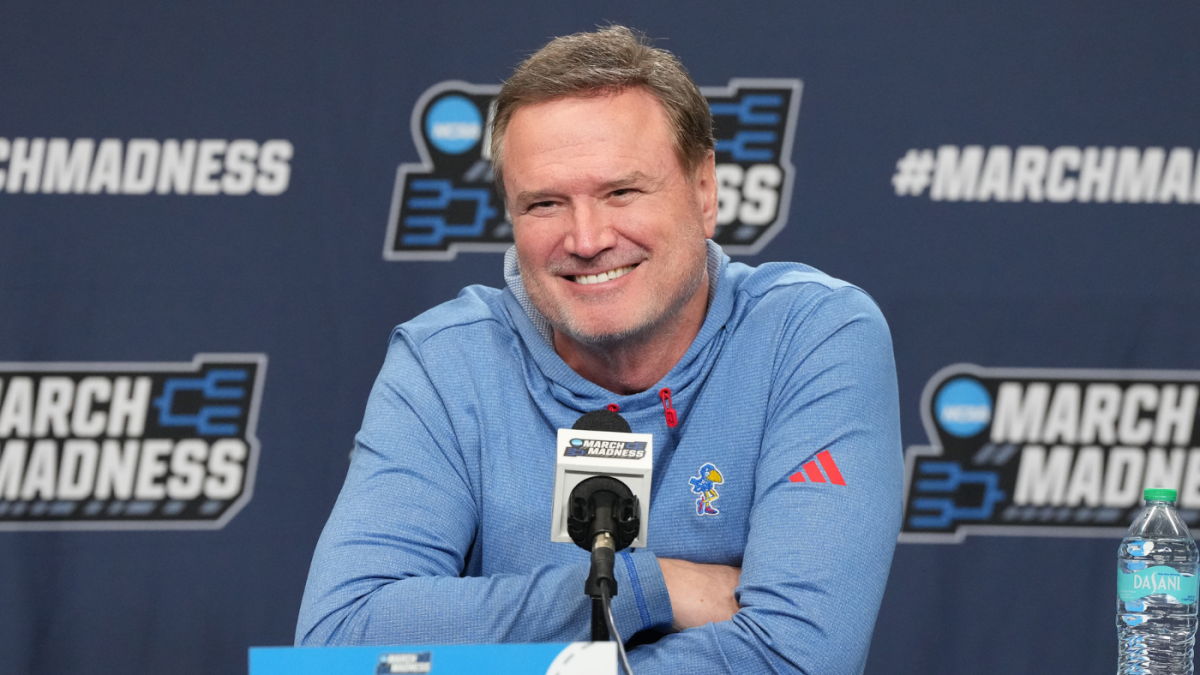Bill Self’s Hospitalization and Heart Procedure: A Detailed Analysis
Introduction
The recent hospitalization of Kansas Jayhawks men’s basketball coach Bill Self for a heart procedure has sparked widespread concern and reflection within the college basketball community. At 62, Self is a seasoned and respected figure in the sport, known for his strategic brilliance and leadership. The news of his health scare serves as a poignant reminder of the pressures and demands of high-level coaching, as well as the importance of prioritizing health and well-being.
The Timeline of Events
The sequence of events leading to Self’s hospitalization and subsequent medical intervention unfolded rapidly. On Thursday, Self began experiencing symptoms that prompted his admission to Lawrence Memorial Hospital. The university’s official statement described these symptoms as “concerning,” though specific details were not disclosed. Medical professionals swiftly evaluated his condition and determined that the insertion of two stents was necessary to address blocked arteries. The procedure was performed successfully, and reports indicate that Self is expected to make a full recovery.
The fact that Self coached practice earlier on the same day he was hospitalized underscores the intensity and dedication inherent in his role. This timeline highlights the critical nature of timely medical intervention and the importance of recognizing and responding to health warnings, even in high-pressure environments.
Understanding the Procedure: Stents and Heart Health
The insertion of stents is a well-established medical procedure used to treat coronary artery disease (CAD). CAD occurs when plaque accumulates within the coronary arteries, narrowing them and impeding blood flow to the heart muscle. This condition can lead to symptoms such as chest pain (angina), shortness of breath, and, in severe cases, heart attacks.
Stents are small, mesh-like tubes designed to prop open blocked arteries, restoring proper blood flow. The procedure involves threading a catheter through a blood vessel to the site of the blockage, where the stent is then expanded to clear the pathway. The insertion of two stents suggests that Self had blockages in at least two coronary arteries, a condition that, if left untreated, could have serious consequences.
While stent placement is generally safe and effective, it is not a cure for CAD. Patients typically need to adopt lifestyle changes, such as a heart-healthy diet, regular exercise, and smoking cessation, to manage their condition and prevent future complications. Medications to control cholesterol, blood pressure, and blood clotting are also commonly prescribed.
Potential Causes and Risk Factors
The exact cause of Self’s heart condition has not been publicly disclosed, but several factors are known to contribute to the development of CAD. These include:
– Age: The risk of CAD increases with age, and Self is 62.
– Family History: A family history of heart disease can significantly elevate an individual’s risk.
– High Blood Pressure: Uncontrolled hypertension can damage arteries, making them more prone to plaque buildup.
– High Cholesterol: Elevated LDL (“bad”) cholesterol levels contribute to arterial plaque formation.
– Smoking: Smoking damages blood vessels and increases the risk of blood clots.
– Diabetes: Diabetes is a major risk factor for CAD and other cardiovascular issues.
– Obesity: Excess weight can lead to high blood pressure, high cholesterol, and diabetes, all of which increase the risk of CAD.
– Lack of Physical Activity: A sedentary lifestyle is linked to several risk factors for CAD.
– Stress: Chronic stress can contribute to high blood pressure and other heart problems.
Given the demanding nature of his profession, Self may have been exposed to multiple risk factors, particularly stress and a lack of physical activity. However, without specific medical details, it is impossible to pinpoint the exact cause of his condition.
Impact on the Kansas Basketball Program
Bill Self’s absence, even if temporary, has significant implications for the Kansas basketball program. As the head coach, Self is not only a strategist but also a leader who shapes the team’s culture and performance. His presence on the sidelines, his ability to motivate players, and his strategic acumen are all integral to the team’s success.
In his absence, assistant coaches will likely assume greater responsibilities, including practice planning, game strategy, and player development. While Kansas boasts a talented and experienced coaching staff, no one can fully replicate Self’s unique leadership style. The players, too, will need to adapt to the change in leadership and maintain their focus and determination during this period.
The timing of Self’s hospitalization is also crucial. Depending on the duration of his recovery, it could affect the team’s preparations for upcoming games, recruiting efforts, and overall morale. However, the university’s assurance that he is expected to make a full recovery is a positive sign, suggesting that his absence will be relatively brief.
The Road to Recovery
The university’s statement that Self is expected to make a full recovery is reassuring. The recovery process following stent placement typically involves a period of rest and rehabilitation. Patients are often advised to avoid strenuous activity for several weeks to allow the arteries to heal properly.
In addition to physical recovery, Self will likely need to make lifestyle changes to manage his heart health and prevent future issues. This may include adopting a heart-healthy diet, engaging in regular exercise, quitting smoking (if applicable), and managing stress. Medications to lower cholesterol, prevent blood clots, and control blood pressure will also likely be part of his treatment plan.
The timeline for Self’s return to coaching duties will depend on his individual recovery progress and the recommendations of his medical team. It is crucial that he prioritizes his health and takes the necessary time to recover fully before resuming the demanding responsibilities of coaching.
A Reminder of Health and Well-being
Bill Self’s hospitalization serves as a stark reminder of the importance of health and well-being, particularly for those in high-stress professions. Coaching at the highest level of college basketball is incredibly demanding, requiring long hours, constant travel, and intense pressure to perform. The stress and lifestyle factors associated with the job can take a toll on one’s health, making it essential to prioritize self-care.
This situation underscores the need for regular checkups, early detection of health problems, and proactive management of risk factors for heart disease. It also highlights the importance of finding healthy ways to manage stress and maintain a balanced lifestyle, even in the face of professional demands.
Looking Ahead: A Future of Optimism
While the news of Bill Self’s hospitalization was initially concerning, the positive reports following the procedure and the expectation of a full recovery provide reason for optimism. His health is the top priority, and a full recovery is paramount. With appropriate medical care, lifestyle changes, and the support of his family, friends, and the Kansas basketball community, he can return to coaching with renewed energy and focus.
This experience also serves as a valuable lesson for others in high-pressure professions, emphasizing the importance of balancing work and health. As Self embarks on his recovery journey, the college basketball community will undoubtedly rally around him, offering support and encouragement. The road ahead may require adjustments, but with the right approach, a successful return to the sidelines is within reach.












